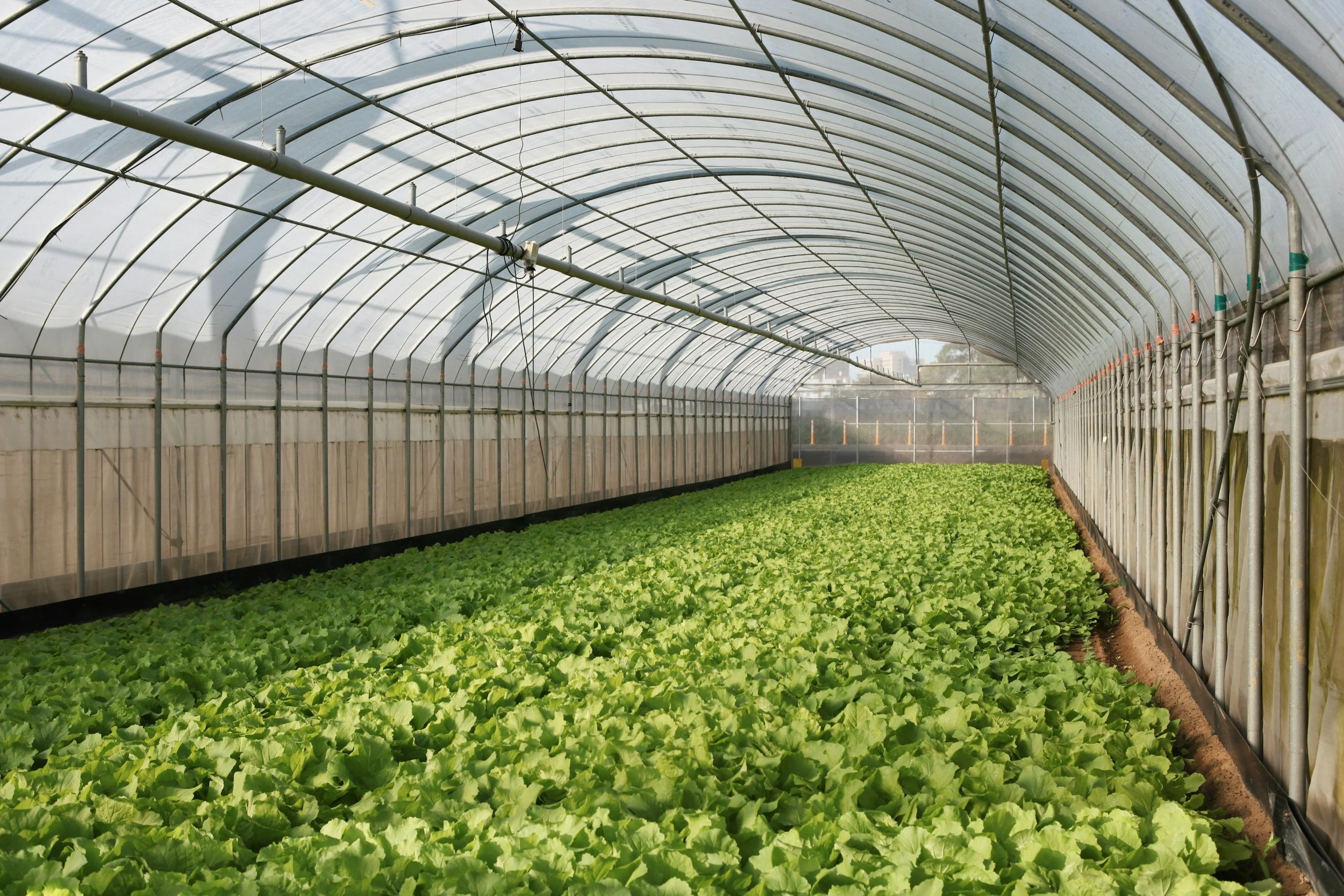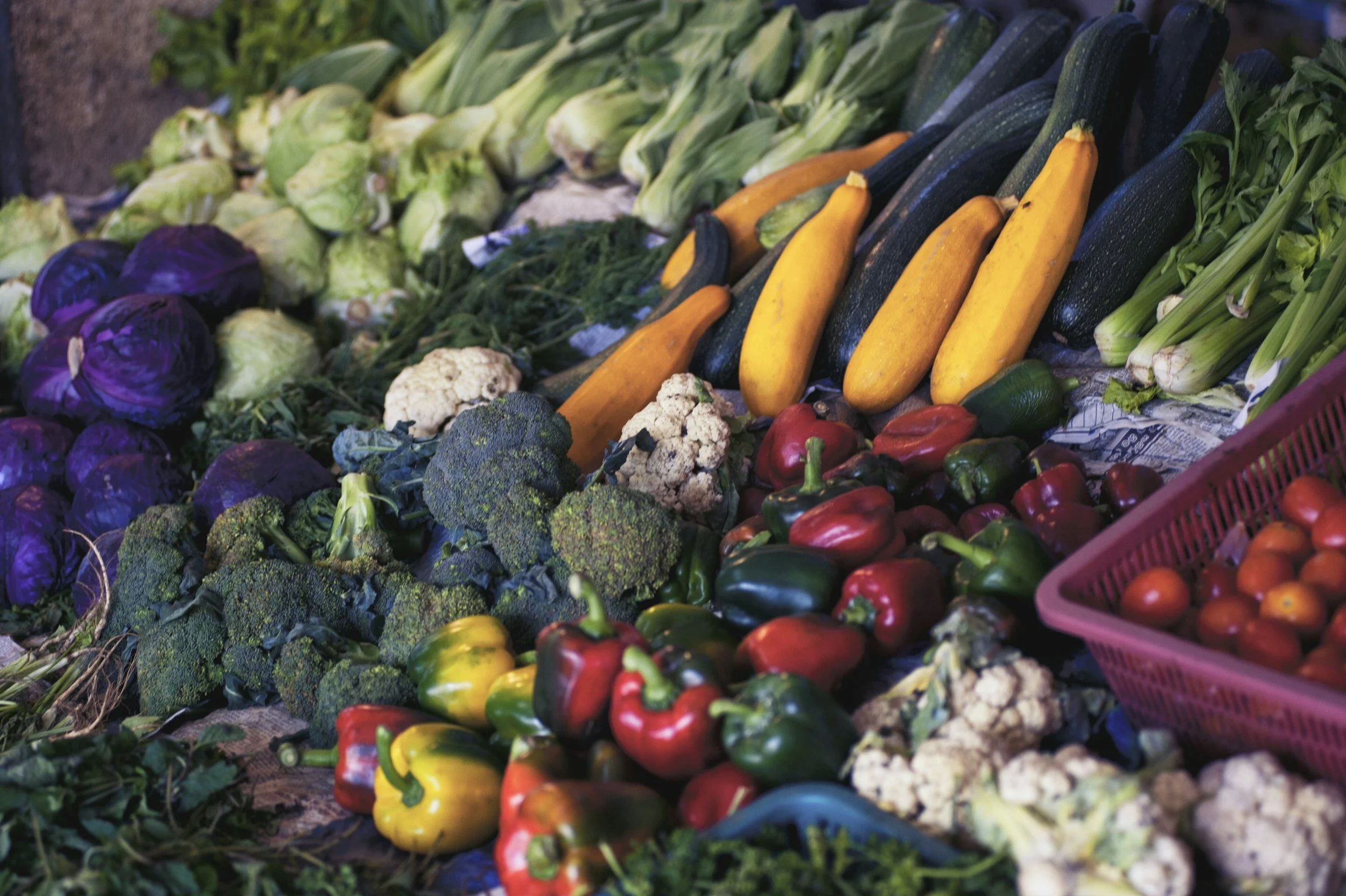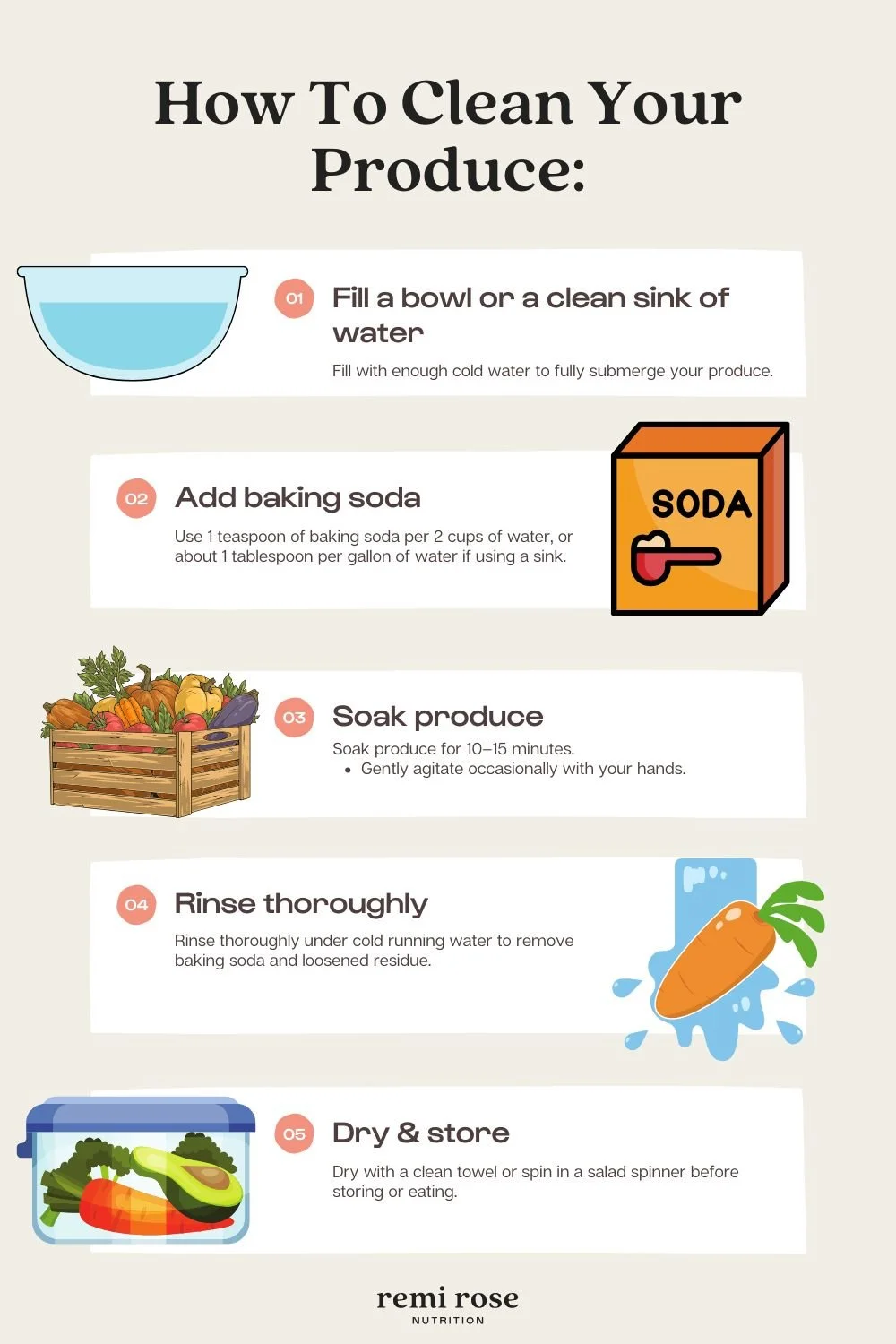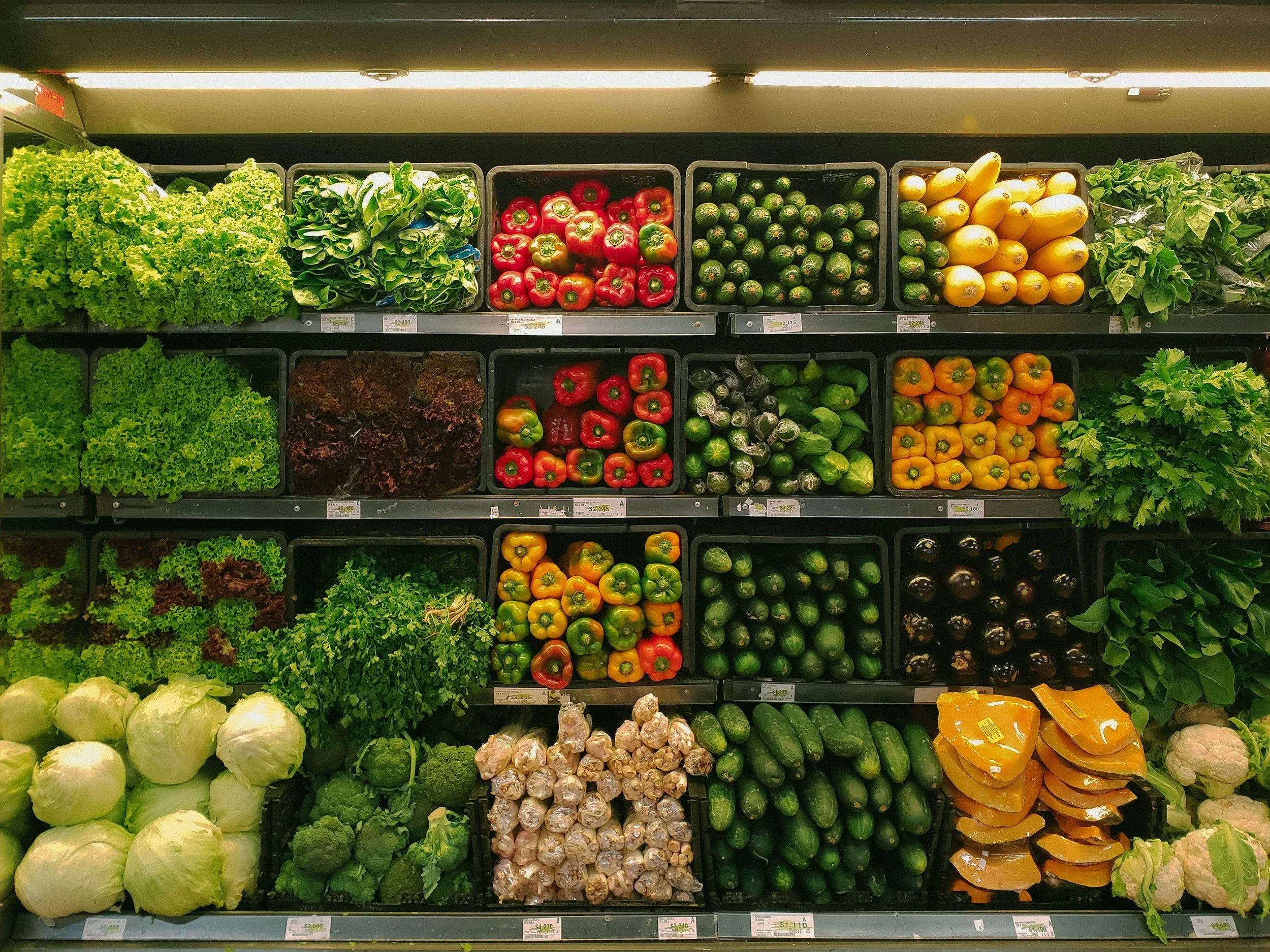A 10-Year Look at EWG’s Dirty Dozen Produce (Updated 2025)
Since 2004, the Environmental Working Group (EWG) has been publishing the Dirty Dozen, a list of the twelve fruits and vegetables most heavily contaminated with pesticide residues. And while buying organic is the simplest way to ensure clean produce, the EWG understand that doing so is not an option for everyone:
“It can be hard to find this information readily and clearly available all in one place. And since organic produce is out of reach for many, the Shopper’s Guide is designed to help people who are concerned about their pesticide exposure better understand which non-organic, or conventional, produce is least contaminated.”
Why is this important?
According to USDA and FDA testing, over 75 percent of conventional produce contained pesticide residue. The more informed you can be about the food you are purchasing, the more you’ll be able to minimize exposure to harmful chemicals.
2025’s Dirty Dozen Revealed: What’s New?
This year, the EWG updated their methodology to better account for pesticide toxicity. Their rankings are now based on these four metrics:
Percent of samples tested with at least one pesticide detected
Average number of pesticides detected on a single sample
Average total concentration of pesticides found on a single sample
Overall toxicity of pesticides on crop
The goal of these changes was to better reflect the actual contamination levels of each produce, resulting in a few noticeable changes to the 2025 rankings.
Newest Members of the “Dozen”
Blackberries — No. 10:
After first being tested by the USDA in 2023, blackberries are making their debut appearance on the Dirty Dozen in 2025. Pesticides were detected in 93% of samples, averaging four different pesticides per sample, raising concern over the pesticide burden on this delicate fruit.
Potatoes — No. 12:
The most consumed vegetable in the United States, potatoes are an unwelcome addition to this year’s list thanks to their high levels of chlorpropham (found in 90% of samples), an EU-banned pesticide used to extend shelf life.
A New No. 1 — Spinach Is The “Dirtiest” of Them All
For the last nine years, strawberries has maintained the top spot of the Dirty Dozen’s list of most contaminated produce — but no more. Spinach, for the first time, ranks No. 1.
Increasing use of pesticides has driven the vegetable’s rise to the top, none more concerning than permethrin, a neurotoxic insecticide banned in Europe and found to cause neurological effects in children. The EWG highly recommends that consumers should consider organic options whenever possible.
The EWG’s 2025 Dirty Dozen List
Spinach – High pesticide residue due to fragile, absorptive leaves.
Strawberries – Frequently sprayed; thin skins make them highly vulnerable.
Kale/Collard/Mustard Greens – Persistent high residues; difficult to wash thoroughly.
Grapes – Regular applications to protect against fungal infections.
Peaches – Soft, permeable skin easily retains pesticides.
Cherries – High pesticide use to enhance appearance and shelf life.
Nectarines – Similar pesticide vulnerabilities to peaches.
Pears – Often treated post-harvest to preserve freshness.
Apples – Consistent pesticide use for cosmetic appeal and longevity.
Blackberries – New addition due to significant pesticide presence.
Blueberries – Regularly sprayed to protect delicate fruit.
Potatoes – Newly highlighted issue with chlorpropham residues.
10 Years of Dirty Produce (2016-2025)
| Rank | 2025 | 2024 | 2023 | 2022 | 2021 | 2020 | 2019 | 2018 | 2017 | 2016 |
|---|---|---|---|---|---|---|---|---|---|---|
| #1 | Spinach | Strawberries | Strawberries | Strawberries | Strawberries | Strawberries | Strawberries | Strawberries | Strawberries | Strawberries |
| #2 | Strawberries | Spinach | Spinach | Spinach | Spinach | Spinach | Spinach | Spinach | Apples | Apples |
| #3 | Kale/Greens | Kale, collard & mustard greens | Kale, collard & mustard greens | Kale, collard & mustard greens | Kale, collard & mustard greens | Kale | Kale | Nectarines | Nectarines | Nectarines |
| #4 | Grapes | Grapes | Peaches | Nectarines | Nectarines | Nectarines | Nectarines | Apples | Apples | Peaches |
| #5 | Peaches | Peaches | Pears | Apples | Apples | Apples | Apples | Grapes | Peaches | Celery |
| #6 | Cherries | Pears | Nectarines | Grapes | Grapes | Grapes | Grapes | Peaches | Celery | Grapes |
| #7 | Nectarines | Nectarines | Apples | Bell & hot peppers | Cherries | Peaches | Peaches | Cherries | Grapes | Cherries |
| #8 | Pears | Apples | Grapes | Cherries | Peaches | Cherries | Cherries | Pears | Pears | Spinach |
| #9 | Apples | Bell & Hot Peppers | Pears | Peaches | Pears | Pears | Pears | Tomatoes | Cherries | Tomatoes |
| #10 | Blackberries | Cherries | Bell & hot peppers | Apples | Bell & hot peppers | Tomatoes | Tomatoes | Celery | Tomatoes | Sweet Bell Peppers |
| #11 | Blueberries | Blueberries | Blueberries | Cherries | Celery | Celery | Celery | Potatoes | Bell Peppers | Cherry Tomatoes |
| #12 | Potatoes | Green beans | Tomatoes | Pears | Tomatoes | Potatoes | Potatoes | Bell Peppers | Potatoes | Cucumbers |
Repeat Offenders — Produce That Hasn’t Left the List
The EWG’s list of the Dirty Dozen changes every year, but a handful of fruits and vegetables have earned the title of repeat offenders:
Spinach & Strawberries:
The worst of the worst, these two crops consistently rank at the top of the Dirty Dozen due to their inherent vulnerabilities. Spinach leaves absorb pesticides easily, retaining residue even after washing. Meanwhile, strawberries, which are highly susceptible to pests and fungi, often undergo frequent pesticide treatment during growing season.
Kale and Greens:
Kale, collard, and mustard greens maintain a high ranking due to their direct pesticide exposure and absorbative into leaf structure — the textured surface makes pesticide removal challenging, further compounding residue retention.
Grapes:
Grapes receive multiple pesticide applications throughout their growth cycle to prevent fungal infections and pests. And because their thin skins provide such limited protection, residue is able to penetrate inside the grapes and remain embedded even after washing.
Peaches and Nectarines:
Soft-skinned fruits like peaches and nectarines are especially susceptible to pesticide residue, as their porous surfaces facilitate absorption. To make matters worse, risk of infestation and disease often necessitates regular pesticide application.
Apples:
In order to preserve their cosmetic appeal and ensure a long shelf life, apples are often sprayed with pesticides, making them a regular on the Dirty Dozen. Removing all residues can be difficult, even with a thorough wash.
Gone From the List … But Safe to Eat?
By definition, only twelve fruits and vegetables can make the Dirty Dozen rankings each year, which means that for every new addition, another must fall off — but does that mean they’re any safer to eat?
Yes and no.
Reduced pesticide application, improved pest management, and stricter regulatory enforcement have all played a role in safer growing practices. But critics argue that even produce not listed may still contain pesticides at levels acceptable by regulatory standards but potentially concerning to consumers.
It is essential to recognize that absence from the Dirty Dozen doesn’t guarantee pesticide-free produce; instead, it indicates lower relative risk. Washing produce thoroughly and continuing informed shopping habits are advised for all fruits and vegetables.
Evolving Landscape: Changes to Farming & Regulation
The past decade has witnessed significant evolution in farming practices and pesticide regulation:
Regulatory Actions: The United States and European Union have progressively tightened pesticide restrictions, banning or limiting numerous hazardous chemicals previously commonly used. These regulatory shifts have had tangible impacts on residue levels.
Adoption of Integrated Pest Management (IPM): Many farms now adopt IPM, combining biological, cultural, and mechanical methods to control pests, drastically reducing chemical pesticide reliance.
Advancements in Technology: Precision agriculture techniques, such as drone monitoring and targeted pesticide application, reduce the overall quantity of pesticides needed and limit environmental exposure.
Emergence of New Pesticides: Newer pesticide formulations, claimed to be less harmful, are now being adopted. However, understanding their long-term effects and cumulative health impacts remains an ongoing research focus.
Advice for Consumers: Safe, Smart Shopping
Consumers can actively reduce their exposure to pesticides through informed and practical choices:
Prioritize Organic Purchases: Focus on organic alternatives for produce consistently ranking highly on the Dirty Dozen list, particularly spinach, strawberries, and leafy greens.
Effective Cleaning Practices: Rinse fruits and vegetables thoroughly under running water. For produce with tougher skins (like apples and potatoes), using a vegetable brush can help reduce surface residues.
Diversify Produce Intake: Regularly rotating the types of fruits and vegetables consumed can help minimize repeated exposure to specific pesticide residues.
Stay Updated: Review annual EWG Dirty Dozen reports to stay informed about current trends and adjust shopping habits accordingly.
Consider Local and Seasonal Options: Produce from smaller local farms often involves lower pesticide use, especially if grown using IPM methods or organic practices.
By embracing these strategies, consumers can balance the benefits of fruit and vegetable consumption with minimized risks associated with pesticide residues.





